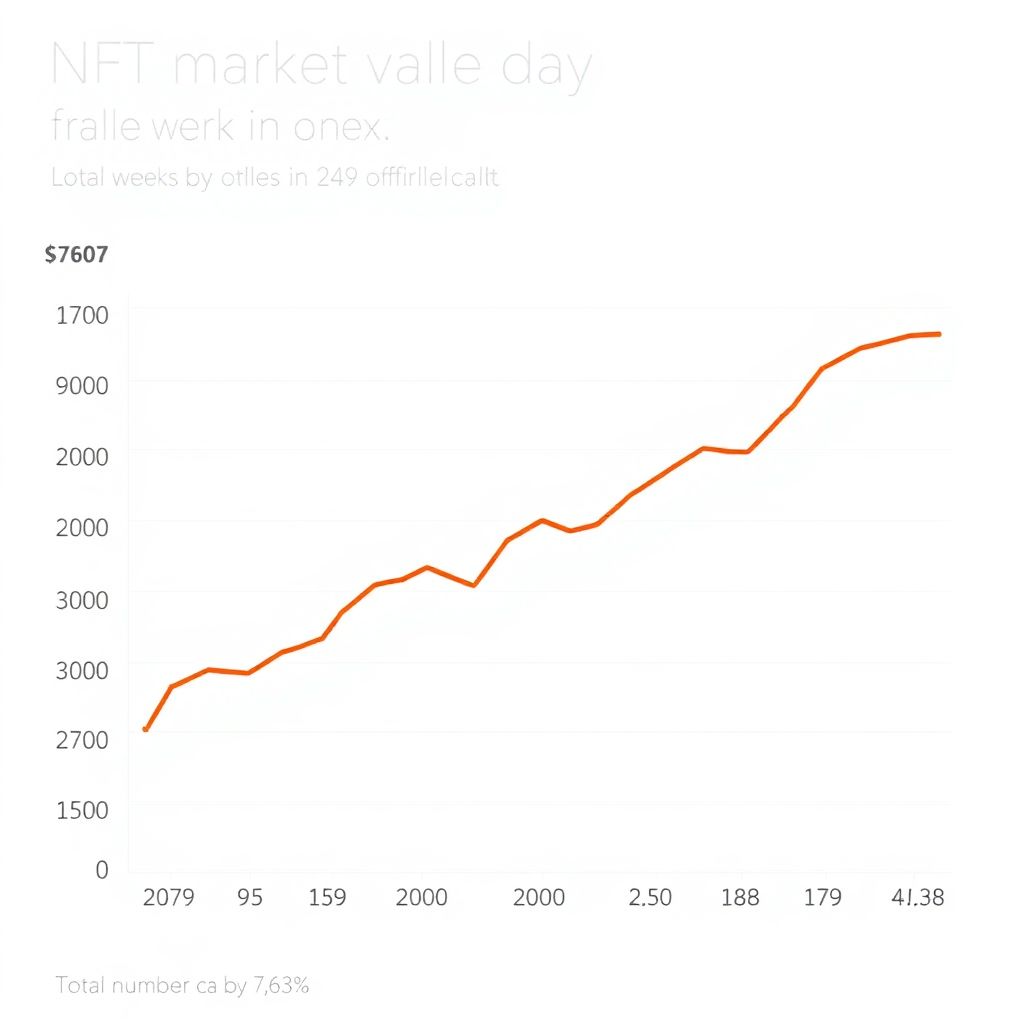NFT Market Sees Steep Decline as Sales Tumble and Pudgy Penguins Plunge
The non-fungible token (NFT) market has faced a significant downturn this week, with total sales volume falling by over 42%, dropping from $161.7 million to just $93.18 million. Despite this sharp decline, metrics suggest that user engagement remains active, with both buyer and seller counts registering noticeable growth.
According to blockchain analytics, the number of unique NFT buyers grew by 33.09%, reaching 509,668, while sellers increased by 21.04% to 413,225. However, the overall number of transactions fell by 7.63% to 1,543,392, indicating fewer trades per user.
Among the biggest stories of the week is the dramatic fall in sales for the Pudgy Penguins collection, which has seen its revenue collapse by 76.27%, from $15.61 million last week to just $3.8 million. This collection, hosted on the Ethereum blockchain, recorded only 128 transactions involving 73 buyers and 77 sellers—a major drop in both volume and activity.
In contrast, DMarket, operating on the Mythos blockchain, climbed to the top position with $9.05 million in sales, up 12.11% from the previous week. It processed 286,645 transactions, attracting 19,577 buyers and 15,873 sellers. DX Terminal, which led the charts last week, slipped to second place with $7.56 million in sales—a 20.58% drop.
A notable newcomer, Guild of Guardians Heroes on Immutable-Zk, entered the rankings in fourth place with a 41.06% weekly increase, totaling $3.45 million in sales across 2,837 transactions. Meanwhile, Bitcoin-based BRC-20 NFT collections showed strong momentum. The $ATMC BRC-20 collection earned $3.21 million, up 38.3%, while another unnamed BRC-20 collection generated $2.9 million, a 57.5% increase.
Ethereum, despite seeing the largest drop in sales volume among blockchains, remained the top-performing network with $35.04 million in NFT sales, a 65.64% decrease from last week. Including wash trading figures, Ethereum’s total NFT activity reached $39.10 million. Still, the number of buyers on Ethereum grew by 41.05% to 47,352, showing resilience in user interest.
Bitcoin took the second spot with $13.17 million in NFT sales, up 11.14% from last week’s $10.11 million. The network also recorded a remarkable 60.49% rise in buyers, totaling 13,462. Base, which held second place last week, fell to third with $10.19 million, down nearly 20%. Despite the sales dip, its buyer count rose by 13.56% to 257,187, though it also registered $4.90 million in wash trading.
The Mythos Chain maintained upward momentum, reporting $9.27 million in transactions—an increase of 13.52%. Its user base expanded by 42.9%, reaching 33,791 buyers. Immutable (IMX) also performed strongly, climbing to $5.73 million in sales (up 41.05%) with 6,012 buyers. BNB Chain and Solana followed, with BNB Chain registering $5.33 million in sales (down 19.62%) and Solana recording $4.92 million (down 6.23%). However, both blockchains saw substantial growth in buyer activity, up 52.26% and 40.36% respectively.
One of the most striking transactions of the week came from a single NFT known as the “Good Deed” token, which sold for a staggering $44.89 million (70.2 million ADA), marking one of the most valuable NFT sales in recent memory. Another notable transaction was Known Origin #264609, which fetched $246,984.31 (63.8 ETH) six days prior.
Despite the overall slump in NFT sales, the broader crypto market is showing signs of recovery. Bitcoin has rebounded to the $111,000 level, and Ethereum has regained ground at $3,900. The global cryptocurrency market cap stands at $3.75 trillion, up from $3.62 trillion the previous week, suggesting renewed investor confidence in digital assets.
This divergence between the NFT sector and the broader crypto market may point to a decoupling trend, where traditional crypto assets are gaining strength while speculative NFT investments face correction. A contributing factor could be the market’s shift in focus toward utility-based and ecosystem-driven tokens, as projects without tangible use cases or strong communities struggle to retain momentum.
In addition, the rise of gaming-related NFT collections like Guild of Guardians suggests that projects offering interactive experiences are gaining traction, possibly at the expense of profile picture (PFP) collections like Pudgy Penguins, which may be losing appeal due to market saturation or lack of innovation.
Another important development is the growing role of Bitcoin in the NFT space. While Ethereum has long been the dominant blockchain for NFTs, Bitcoin’s increasing share of the market—especially with the emergence of BRC-20 standards—signals a potential reshuffling in blockchain dominance. With more infrastructure being built to support NFTs on Bitcoin, it could become a formidable player in the digital collectibles space.
Moreover, the surge in buyer activity across blockchains, despite falling sales volumes, may hint at a redistribution of capital rather than a withdrawal. New entrants and smaller buyers could be entering the market, looking for undervalued assets or exploring newer platforms with lower transaction costs.
Looking ahead, the NFT market may continue to experience volatility, especially as macroeconomic factors, regulatory developments, and blockchain innovations influence investor behavior. While headline-grabbing sales like the $44 million Good Deed NFT show that big money still flows into the sector, the overall trend suggests a maturing market that’s becoming more selective and utility-driven.
As projects adapt to new market dynamics, those offering real-world value, community engagement, or integration with gaming and metaverse platforms are more likely to thrive. For now, the NFT space is recalibrating, and the next phase of growth may depend less on hype and more on substance.

